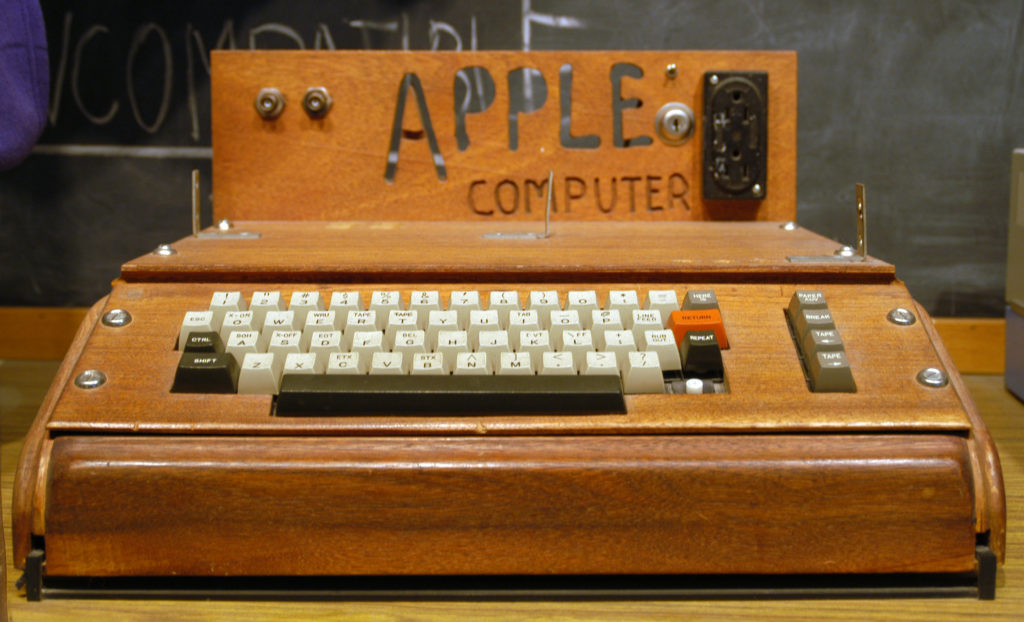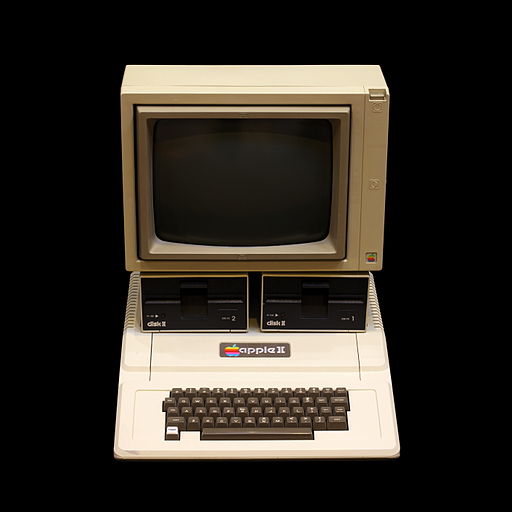Welcome to our eighth Pivotal Moments blog. If you follow us on social media, you’ll know what this is all about. To paraphrase Confucius, it’s only by knowing where we’ve been that we can know where we’re going.
“Study the past, if you would divine the future.”
Confucius
Whether you’re Apple or Windows, iPhone or Android, Apple’s contribution to the world of digital technology is irrefutable.
With founders that are now household names and technology that continues to grow and push the market, it’s no wonder that in 2018 Apple made history. They became the world’s first publicly traded company to achieve a market capitalisation of $1 trillion. I mean, wow.
But like many big names, Apple had humble origins. And it all begins with the two Steves: Steve Jobs and Steve Wozniak.
Early Years
Often referred to as Jobs and Woz, the two were introduced by a mutual friend in 1971. The pair got along well, thanks to a love of pranks and technology.
While Jobs worked at Atari and Woz worked at HP, the pair spent their free time working on an Atari arcade game. Jobs had convinced Woz to help him bring down the number of logic chips required for the thing to run right. When he received a bonus at work for their work, he shared the money with Woz.
Jobs and Woz were both members of the HomeBrew Computer Club, a group of hobbyists that led to the pair’s love of kit computers. It was also where Woz was introduced to the MITS Altair, which has been cited as the inspiration for Apple’s philosophy of simplicity.
The Pivotal Moment

Of course, the Apple I itself was essentially a kit for PC building. Woz built the units himself, intending to sell them for little more than the money it took to buy the parts. He had no desire to change the world. He’s even said since, that his primary goal was to show off how much he could do with such a small amount of resources. Modest.
However, Jobs, recognising the genius of what Woz had built, sold his VW to fund more units. Woz sold his calculator to add to their funds, and on the 1st of April 1976, the two founded Apple Computer Inc.
The Apple I was originally part of a deal Jobs made with the local Byte Shop. He promised to supply 50 computers for $500 each, but Jobs and Woz had neither the money nor resources to fill the order. And no means of getting either. Until Jobs took the purchase order to Cramer Electronics, that is.
It was an enormous risk.
Jobs was banking on being able to produce the units to supply the Byte Shop in enough time to settle the bill, using the proceeds from selling them to buy the parts. To meet the deadline, Jobs and Woz brought in friends and family to help solder parts. But the risk paid off. Though they built only 200 computers, the Apple I was a success. And it provided the founders of Apple with the money they needed to design the Apple II.
Apple II
Unfortunately, though the Apple II was a great design, the pair needed more money to get it off the ground. Jobs and Woz brought in investors, but they ended up controlling most of the board’s seats. And it wasn’t long before that same board had decided that Jobs was too young to run a company with Apple’s potential.
Though Jobs had brought on ex-Pepsi exec John Sculley in 1983, by 1985 Sculley was done with Jobs. He quickly convinced the board to get rid of him.
Jobs left and founded a new company: NeXT. The company developed a technical marvel: a cube-shaped computer that was amazing, but pricey at $6500 a unit. By 1993, NeXT had stopped trying to sell computers and moved on to selling software, though they struggled even with that.
Apple wasn’t faring much better. Their software was beginning to look less appealing as companies like Microsoft began to provide cheaper PCs that were more accessible. Without Jobs, Apple was lost as to how to regain their competitive edge.
In a last-ditch attempt to recover its reputation, Apple’s CEO bought NeXT in 1997 for $400 million. Just months later, the CEO was fired and Jobs was given back control of the company.
The Apple Turnaround

Jobs stepped in and made big decisions, quickly. Apple had no particular strategy, a wide array of products – none of which were doing particularly well – and was losing money with every quarter.
Cancelling 70% of Apple’s products and retiring over 300 staff, Jobs quickly turned around Apple’s $1 billion loss.By 1998, Apple was making a profit again – to the tune of $300 million.
That same year, Apple unveiled the iMac. More affordable than any computer the company had ever produced, it was sleek and attractive too. And it marked big changes in the air for Apple.
In 2001, Apple released the iPod. Revolutionary, its elegant interface, companion software and huge memory set the target for competitors across the world.
In 2007, Jobs announced what would become Apple’s most profitable technology to date – the iPhone. With a touchscreen interface and modern design, once again Apple had set a higher standard. In 2010, Apple followed up the success of the iPhone with the introduction of the iPad tablet computer.
Why is Apple Still Important Today?
Even if you’re not a fan of Apple’s technology, you can’t deny the effect the company has had. Despite their ups and downs, Apple has time and again set the standard for modern digital devices in a way that no other company has.
Though they marked themselves as global technology leaders with the iPod, they raised the bar for competitors like Samsung and Microsoft with the iPhone and the iPad.
Where US technology was once considered to be behind the times in comparison to Asia and Europe, they now produce the most desired consumer technology in the world.
The unveiling of the iPhone led to a new class of smart devices and pushed network operators to invest in new technologies. This led to faster adoption of 3G, 4G and 5G networks than we could have dreamed of. Apple are still pushing for more with every new release. Without Apple, smartphones wouldn’t be what they are today, Google probably wouldn’t prioritise web development, SEO and UX for mobile as highly, and everyday life would look considerably different.
What do you think? Are you an Apple user? Can you imagine life without Apple?